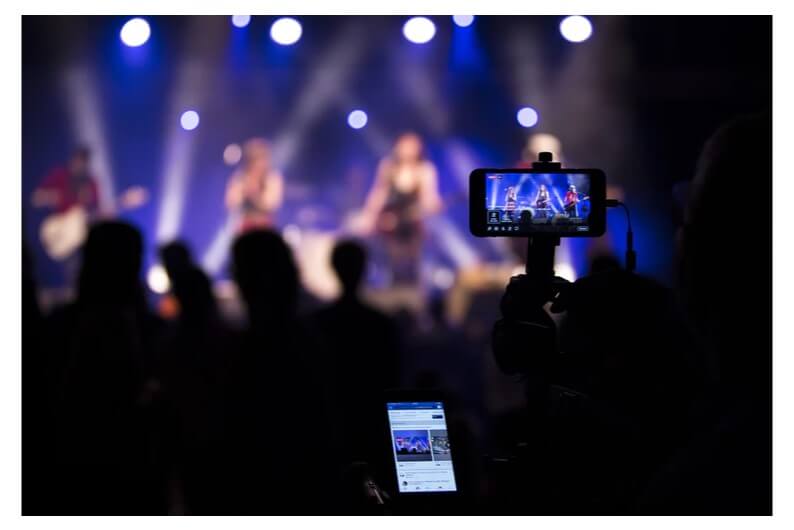Contents
In recent years, live streaming events have surged in popularity, transforming how individuals and organizations engage with audiences in real-time. From concerts and gaming tournaments to corporate conferences and virtual classrooms, live streaming has become a ubiquitous medium for sharing experiences, fostering connections, and reaching global audiences. In this article, we delve into the growing trend of live streaming events, exploring the factors driving its popularity, its impact across various domains, and the implications for the future of digital communication.
The Rise of Live Streaming: A Digital Revolution
The rise of live streaming events signifies a digital revolution in the way content is created, distributed, and consumed. Enabled by advancements in technology, increased internet bandwidth, and the widespread adoption of smartphones, live SVT Play in UK democratized access to real-time experiences, allowing individuals and organizations to connect with audiences on a global scale.
One of the key drivers behind the popularity of live streaming events is its immediacy and interactivity. Unlike traditional media formats such as television or radio, live streaming enables viewers to participate in events as they unfold, offering a sense of authenticity and spontaneity that resonates with audiences. Whether it’s a live music performance, a breaking news broadcast, or a live Q&A session, live streaming events create a sense of connection and engagement that transcends physical boundaries.
The Proliferation of Platforms and Technologies
The proliferation of live streaming platforms and technologies has played a significant role in fueling the growth of live streaming events. Platforms like Twitch, YouTube Live, Facebook Live, and Instagram Live have made it easier than ever for individuals and organizations to broadcast live content to audiences of all sizes. These platforms offer intuitive interfaces, robust streaming capabilities, and built-in audience engagement features that empower creators to produce high-quality live content with minimal technical expertise.
Furthermore, advancements in streaming technologies, such as low-latency streaming protocols and adaptive bitrate encoding, have enhanced the quality and reliability of live streaming experiences. With improved video and audio quality, reduced latency, and seamless playback across devices, live streaming technologies have become more accessible and user-friendly, driving greater adoption and participation in live streaming events.
Diverse Applications Across Industries
Live streaming events have found diverse applications across industries, catering to a wide range of interests and audiences. In the entertainment industry, live streaming concerts, festivals, and gaming tournaments have become cultural phenomena, attracting millions of viewers and generating unprecedented levels of engagement. Similarly, in the world of sports, live streaming has transformed the fan experience, enabling sports leagues and organizations to reach fans worldwide and deliver immersive, interactive broadcasts.
Moreover, live streaming has revolutionized the way businesses and organizations communicate and collaborate. From virtual town halls and product launches to online training sessions and webinars, live streaming has become an essential tool for disseminating information, engaging stakeholders, and fostering community engagement. In the education sector, live streaming platforms have facilitated remote learning initiatives, enabling educators to deliver interactive lessons and lectures to students across geographical boundaries.
Engaging Audiences and Fostering Community
One of the key strengths of live streaming events lies in their ability to engage audiences and foster community in real-time. Unlike pre-recorded content, live streaming encourages active participation and interaction, allowing viewers to ask questions, leave comments, and engage with hosts and fellow audience members. This real-time feedback loop creates a sense of intimacy and connection that enhances the viewing experience and strengthens community bonds.
For content creators and brands, live streaming events offer a unique opportunity to build relationships with audiences, cultivate brand loyalty, and drive engagement. By hosting live Q&A sessions, behind-the-scenes tours, and interactive demonstrations, creators can forge meaningful connections with their audience and humanize their brand identity. Similarly, for influencers and social media personalities, live streaming provides a platform to connect with fans authentically and in real-time, fostering a sense of belonging and community among followers.
Monetization and Revenue Opportunities
Live streaming events present lucrative monetization and revenue opportunities for content creators, brands, and platform providers alike. Through sponsorship deals, product placements, and brand partnerships, creators can monetize their live streams and generate revenue while delivering value to their audience. Additionally, platforms may offer monetization features such as virtual gifting, subscriptions, and ad revenue sharing, providing creators with multiple avenues to monetize their content and grow their audience.
For businesses and organizations, live streaming events can serve as a powerful marketing tool for promoting products and services, driving sales, and enhancing brand visibility. By leveraging live streaming platforms to host product launches, sales events, and exclusive promotions, businesses can engage customers in real-time and create memorable, interactive experiences that resonate with their target audience.
Conclusion: The Future of Live Streaming Events
In conclusion, the growing trend of live streaming events represents a seismic shift in the way content is produced, consumed, and monetized in the digital age. As technology continues to evolve and consumer preferences evolve, live streaming events will continue to play a central role in shaping the future of digital communication and entertainment. With its immediacy, interactivity, and global reach, live streaming has democratized access to real-time experiences, fostering connections and communities across geographical boundaries.
As we look ahead, the future of live streaming events holds boundless potential for innovation, creativity, and engagement. From immersive virtual experiences to interactive broadcasts, live streaming will continue to evolve and expand, offering creators, brands, and audiences new opportunities to connect, communicate, and collaborate in real-time. As the live streaming landscape continues to evolve, one thing is clear: the future of digital communication is live, interactive, and endlessly exciting.

